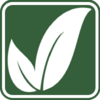| 500Foods shared this story from |

In addition, there are now crop chemicals that are much safer for parasitoids and predators.
Cabbage is often targeted by the diamondback moth (Plutella xylostella) (DBM), and an infestation of this pest can ruin an entire harvest. But a remarkably effective parasitoid wasp called Cotesia vestalis can rid the crop of DBM larvae.
READ Parasitoids – The ‘good guys’
A number of other parasitoids attack DBMs, but I find C. vestalis to be the most abundant and effective. However, very few cabbage farmers know about the role that this predator can play in an IPM programme. I’m also unaware of any company that produces it for this purpose.
Unfortunately, because there are no representatives doing the rounds to sell parasitoids and provide information on their management to farmers, there has been relatively little interest in IPM.
Protecting predators
C. vestalis numbers decrease substantially in winter and increase slowly in spring as DBMs become active. As a result, a safe product should be used against DBMs at this time to allow the wasps to establish themselves properly; thereafter, it may be unnecessary to spray.
READ Wasps kill flies
Bollworm can also be a problem for cabbage farmers, but fortunately a product that kills bollworms without harming parasitoids is now available.
DBMs attack all Brassica plants to various degrees, as well as many weeds such as shepherd’s purse. In fact, these can be the initial source of DBMs as well as of parasitic wasps.
If you don’t use harsh chemicals and spray only when necessary, these beneficial predators will start to enter the lands on their own.
Whitefly and hawaiian beet webworm
Whitefly are targeted by the parasitoid Encarsia formosa, which is available commercially and can be used preventively or at the first sign of the pest. It, too, is capable of complete control.
The Hawaiian beet webworm is a small caterpillar that eats holes in leaves and on occasion can cause much damage to beetroot and Swiss chard. Usually, the first sign of impending damage is the presence of small, delta-wing moths with lateral white stripes on their wings.
Walking through the crop will usually flush them out, an indication that you should examine the crop more closely.
Turn leaves over to look for the small caterpillars. Also check whether there are any white cocoons; these indicate the presence of parasitoids that can put a stop to the infestation.
Keep inspecting the crop from this moment to see whether you need to spray, and whether there are parasitoids. These are small, dark wasps that scan the leaves for caterpillars. If necessary, spray a soft product that protects the wasps.
IPM is an effective, environmentally friendly and money-saving approach well worth practising.
Bill Kerr is a vegetable specialist and a breeder of a range of vegetables.

